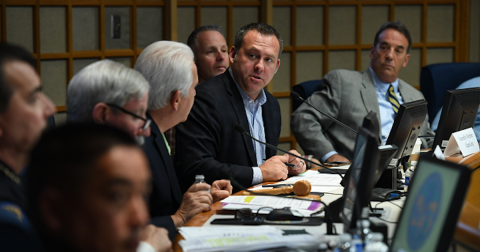Just when you thought Donald Trump and Nancy Pelosi were on different sides of the aisle, current California Assembly member and congressional candidate Adam Gray is getting attacked by one side of the aisle for being a Trump supporter — and by the other side for being a Pelosi supporter.
Adam Gray, who represents California’s 21st Assembly District, is a registered Democrat. However, he is well-known for not always toeing the party line. This is why he is often referred to as an “independent” Democrat in the race for Congressional District 13’s (CA-13) open seat.
In 2019, for instance, Gray wrote an op-ed for Cal Matters in which he called out his own party for making “a sport of disagreeing with President Trump.” He further criticized proposed environmental legislation in the legislature in response to Trump’s comments on environmental science as “dangerous.”
In 2020, Gray was stripped of his chairmanship of the Governmental Organization Committee after he went against Assembly leadership on the issue of water rights.
On his website Gray’s campaign says
“Adam has championed bipartisan commonsense solutions. He was elected by his colleagues to lead the New Democratic Caucus and founded the California Problem Solvers Caucus which brings Democrats, Republicans, and independents together to address California’s most critical issues including homelessness, the pandemic, and drought.”
In any other state, a politician that prioritizes coalition building across the aisle won’t make it past the primary. Under a partisan primary system, there is no room for dissent or free thinking. Party loyalty must come before everything else.
Independent-minded politicians like Gray are attacked by members of both major parties. In Gray’s case, Republicans will attack him for being a "Pelosi Democrat" while some members of his own party will call him a "Trump Democrat."
California is one of a few states where you can buck your party as a result of the state’s nonpartisan open primary system. All candidates and voters, regardless of party, participate on a single primary ballot and the top two vote-getters advance to the November general election.
Running as a small *i” independent has made him a target for candidates and public officials on both sides of the aisle, but it has also opened a window of opportunity with the district’s voting population. Democrats like Gray can campaign for Republican and independent votes, and still make it out of the primary.
In a heavily Democratic district like CA-13, what distinguishes the Democrats will not only decide the nonpartisan primary, but the general election as well, and if the general election comes down to two Democrats, it will be voters outside the party that decide the winner.
Getting attacked by members of both parties may end up bolstering Gray's appeal among segments of the electorate that would have absolutely no say in who represents them in Congress under the types of partisan primary systems used in much of the country. However, under a nonpartisan system, they do.
